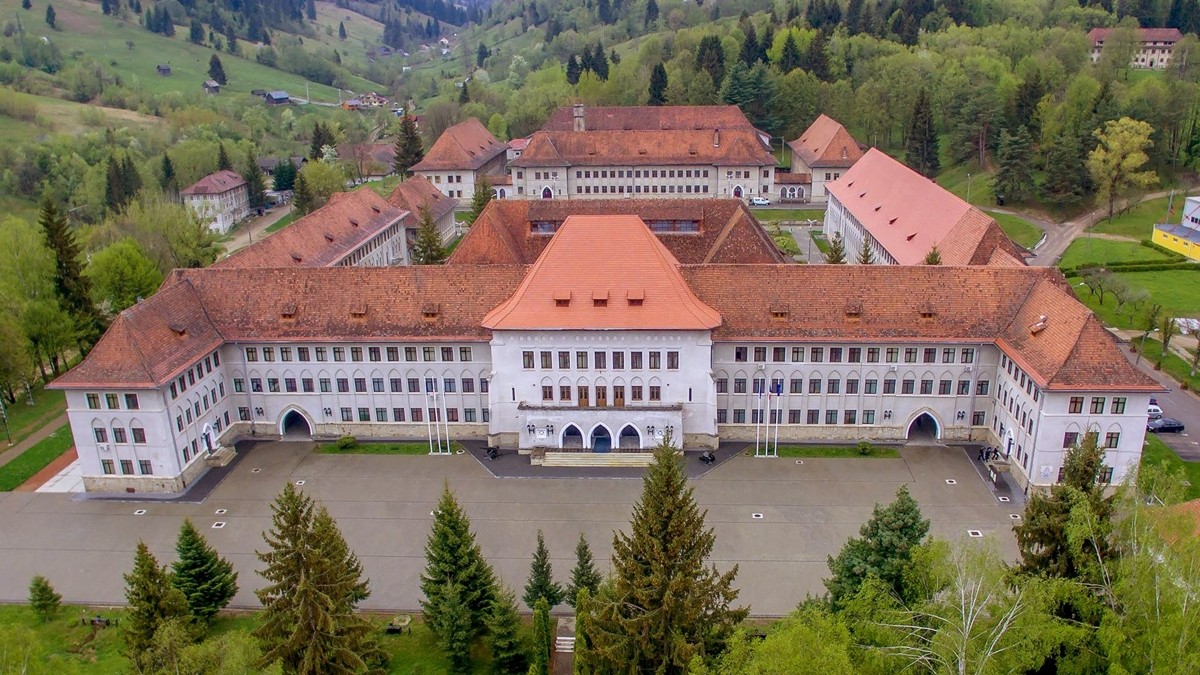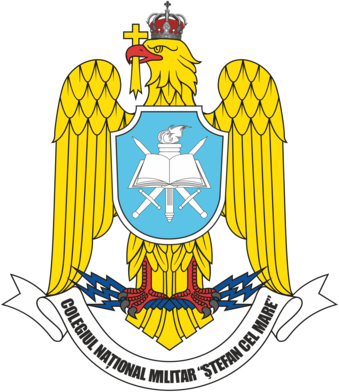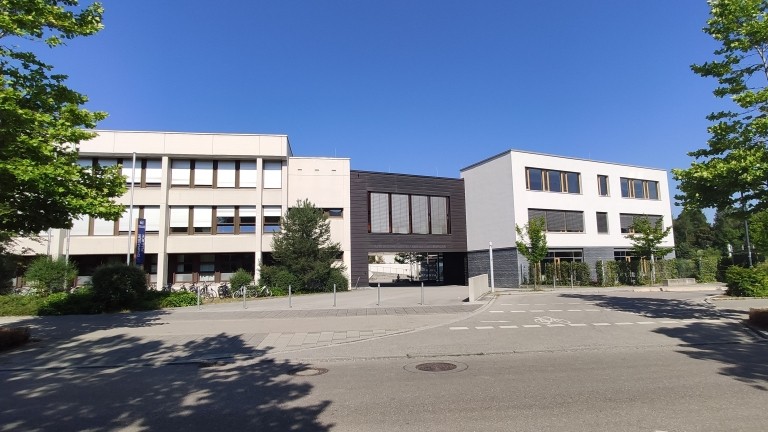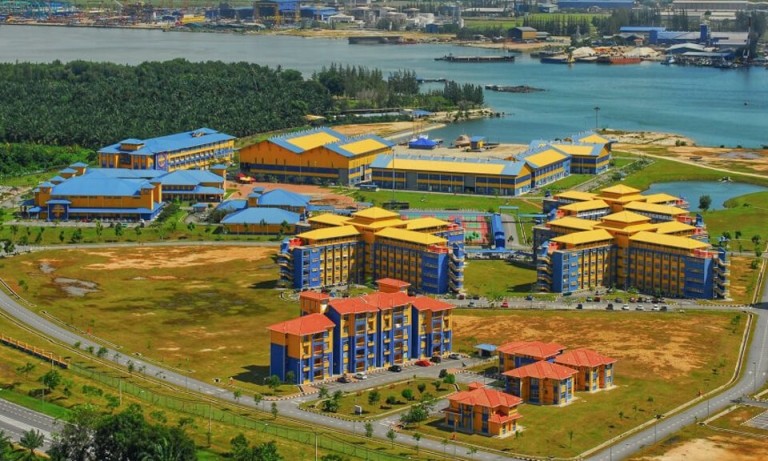Allied Telesis has been a good partner for us. Not only have they built a future-proof network infrastructure for our campus but they are also helping us teach our students the principles of computer networking. This fits perfectly with our specialized focus on computer science.
Colonel dr. Military College “Stefan cel Mare”
The Military College “Stefan cel Mare” is a Romanian state military school integrated in the national system of high schools. It has a military profile and specializes in mathematics and computer science. Chartered in 1924, the school has resided in Campulung Moldovenesc since 1953.
The campus spans 14 buildings and houses various classrooms and laboratories, a museum of natural sciences, a library and reading room, a festival hall, a chapel, and other meeting facilities, as well as offices for the teaching staff, administrators, and military commander.
Like any modern school, the military college needs Internet access and local networking to allow students and faculty to reach online resources used in the classroom, and to give administrators and staff access to resources to run the school.
The Existing Networks Were Disjointed, Unmanaged
Networking on the campus grew in fits and starts as needs arose over the years. As a result, each building of the campus had its own separate wired network and there was little to no interoperation among them. The networks had been built using different brands of equipment, much of which was consumer-grade. The same was true for the WiFi networks. There was virtually no management of these disparate networks. Making matters worse, most of the buildings had their own Internet access points because this was easier to implement as needed rather than coordinating a single connection.
The lack of centralized management led to a reactive approach to IT-related problems. IT administrators were constantly running from one issue to another. Having to learn about and support so many different equipment brands was troublesome as well. “Our IT people were always called upon to ‘put out fires,’ so to speak,” says colonel dr. Romeo-Aurelian Popovici. “There was no coherence to our network strategy, and this was causing extra work and added expenses. We knew we needed a single network that could be managed centrally to reduce our IT issues and costs.”
The school outlined its needs for a new network infrastructure. They included both wired and wireless networking to cover the entire campus, preferably from a single vendor, as well as the ability to have centralized management and administration of the entire network.
The school looked at high performance solutions from the most important network vendors. After carefully analyzing all the offers, the proposal from Allied Telesis has been selected as being the most effective one, with the best price-to-performance ratio. The solution included not only the wired and wireless networking equipment, but also the management suite that allows, initially, the quick, almost totally automatic deployment and afterwards, full control of the entire network from a single pane of glass.
Deployment of the New Infrastructure Was Fast and Efficient
Once the network was designed, a very short window of just four weeks was allotted for deployment, followed by a month for thorough testing. The complete network infrastructure, including all hardware and software, was in full production mode within two months.
Allied Telesis actually built two completely independent networks, owing to the need for an internal network. Dual links connect the respective network stacks to access level switches positioned in different parts of the campus in specially built communications rooms. Allied Telesis implemented high availability features, including VCStackTM and Rapid Spanning Tree Protocol (RSTP), to simplify management and build in redundancy for uninterrupted performance.
Direct connected access points (APs) provide wireless access for the campus. The APs are powered using Power over Ethernet (PoE). Authentication mechanisms were deployed for the AP links to provide protection against someone trying to access the network via the physical ports of the APs.
The multiple Internet access points were consolidated down to one to reduce costs and complexity.
The Autonomous Management Framework (AMF) runs throughout the networks, providing easy access to the switches for management purposes. AMF is an embedded technology native to Allied Telesis that automates everyday network administration tasks such as device configuration and keeping up-to-date backups of the configurations. If a switch were to fail, a replacement unit could simply be plugged in and configured automatically.
The network also uses Vista ManagerTM EX, a single pane of glass monitoring and management platform that provides total control of wired and wireless devices. The school finds the simplicity of Vista Manager’s graphic user interface (GUI) to be a huge plus.
And finally, the school utilizes Autonomous Wave Control (AWC), an intelligent wireless controller that delivers a better WiFi experience with lower deployment and operating costs. AWC uses machine learning to analyze radio coverage and interference to deliver better wireless connectivity that automatically adapts to environmental changes and dynamic bandwidth demands from users.
All together, these management tools create efficiencies in configuring, monitoring, managing, and optimizing the networks.
The Result: A Model Network
Now the military school has a fit-for-purpose network infrastructure that well serves all the educational applications running onsite. Everything can be managed from one console— the wired and wireless equipment of both the public and the internal networks.
“We are impressed with the fast installation of this new network infrastructure,” says Popovici. “It has been fully operational for half a year now and we’ve had very good results in terms of performance and the simplicity of management. We believe this could be a potential model network for other military schools across the country.”
Allied Telesis provided training to the school’s IT staff so they are able to operate the network for themselves. In addition, Allied Telesis is working with the computer science program at the school to build a customized training program for their students. The training will be based on the ATI technical training curriculum, and it will help students develop new skills and knowledge related to the networking domain.
“Allied Telesis has been a good partner for us,” says Popovici. “Not only have they built a future-proof network infrastructure for our campus but they are also helping us teach our students the principles of computer networking. This fits perfectly with our specialized focus on computer science.”
“Our long-standing relation with Allied Telesis that goes back almost 20 years, kept us on the forefront of the new technologies and let us benefit of the automation features included in their equipment”, says Dragos Georgescu, the CEO of ICS Net Advanced Technologies, the partner that performed the installation. “AMF, the configuration management suite, helped us flawlessly install the whole network in just a couple of days, saving us a lot of precious time. The overall flexibility of the solution allowed us to make the fine tuning while the network was in use, observing the end-user behavior and making the changes accordingly, without interfering with their tasks.”








